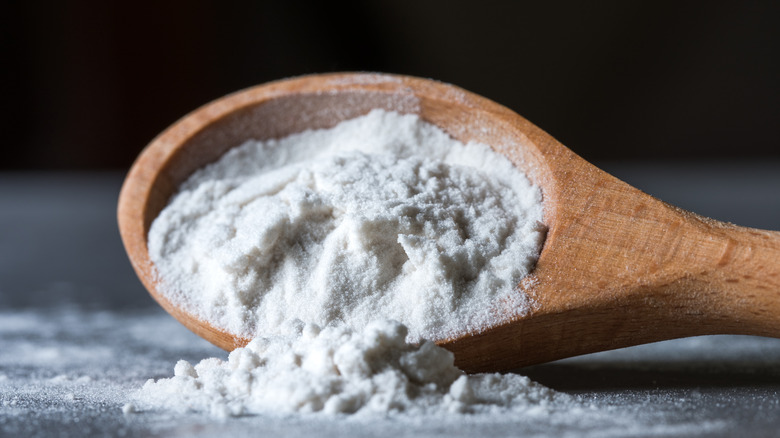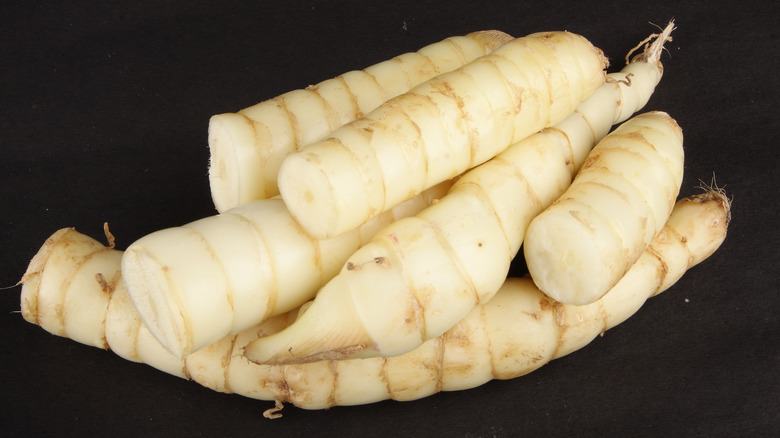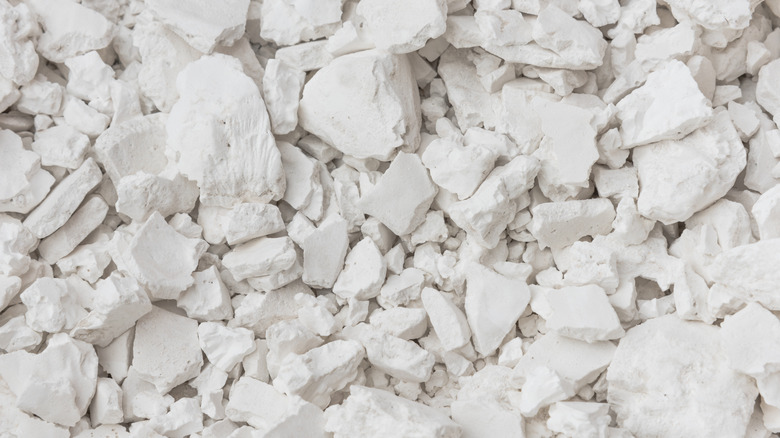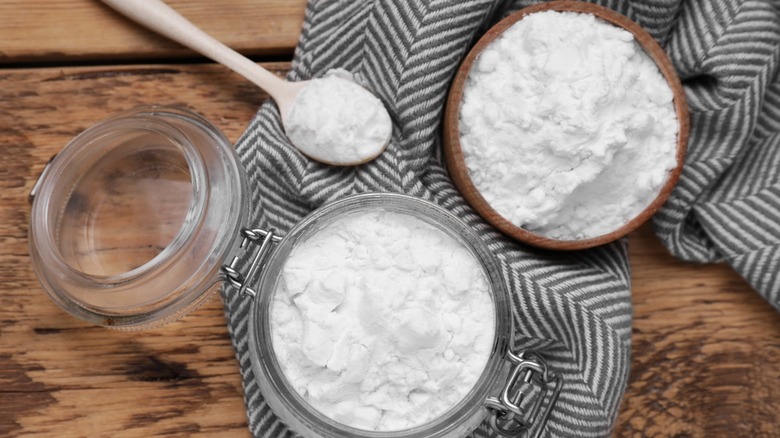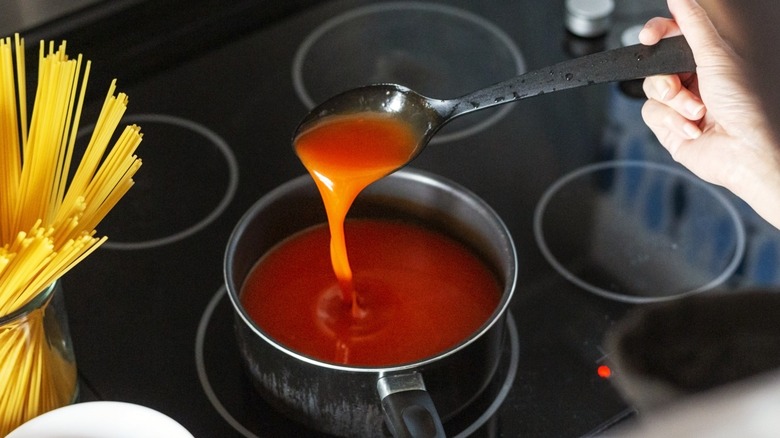What Is Arrowroot And What Is The Best Way To Use It?
Whether it is due to globalization, increased awareness of food sensitivities, or simply a rise in more adventurous home cooks, it seems that there is always a new ingredient worth trying these days. Such is the case lately with arrowroot (plants of the genus Maranta), a Latin American ingredient increasingly used in cooking and baking around the world, particularly in gluten-free, vegan, and paleo recipes.
If you have yet to hear of arrowroot, you need not feel behind the eight ball. This trendy tuber — which is most commonly sold and used in its powdered form — was not even on the average person's radar until the mid-2010s. Even then, it did not hit its peak popularity until 2019. However, this ingredient can be quite a handy one to have around the kitchen. To learn more about arrowroot, join us as we do a deep dive into its origins, traits, and culinary uses, as well as answer a few other frequently asked questions.
What is arrowroot?
As its name suggests, arrowroot is a root vegetable (or the powder derived from it) that hails from Guyana, the western region of Brazil, and the Caribbean islands. Its name is rumored to have come from the Indigenous Arawak word "aru-aru," which means "meal of meals." The roots of the plant — which can be harvested from any of several species in the genera Maranta — are easily identified by their large size, narrow, tapered shape, and pale color ranging from light gold to ivory.
Despite its Latin American origins, arrowroot has taken hold as a popular culinary staple in many areas of the world, including places as far as South Africa, Australia, and parts of Asia. It is possible to eat arrowroot as you would any other root vegetable, as it has a starchy texture and a sweet, nut-like flavor sometimes described as tasting like corn. But it's far more typical for it to be ground into a powder and used as an ingredient in cooking and baking. When used in this powdered format, cooked arrowroot has no detectable taste whatsoever.
It's also important to note that the starch derived from the tubers of other unrelated plants — like those of the genera Canna, Arum, Curcuma, Tacca, and Manihot — may sometimes be called arrowroot. While their properties are similar, they are not true arrowroot and will often be cheaper.
How is arrowroot powder made?
Arrowroot powder, also known as arrowroot starch or arrowroot flour, is made through a process of peeling, cutting, mashing, separating, and drying. It begins by removing the tough outer skin of the root and then chopping the flesh into more manageable pieces.
These pieces are then placed into a bowl with water and mashed into a pulp. This allows the root paste to release its many starches into the water. Finally, the pulpy byproduct is removed from the mixture and the separated starch is dried out. The result of this process is a fine, bright white powder that is mostly pure starch. It is entirely without flavor and has minimal texture.
Arrowroot powder should be stored in an airtight container in a cool, dry place. If stored correctly, the powder will last a long time — anywhere from three to four years. After this point, it is still safe to consume, but its quality may diminish.
Arrowroot powder vs. cornstarch
Arrowroot powder and cornstarch may look identical at a glance. This is no surprise, as they are both forms of extracted starch. They even have similar nutritional profiles and are often used for the same purposes; however, they possess some key differences worth keeping in mind. One notable distinction between the two is flavor. While cornstarch is very mild, it still may have a detectable taste for some, whereas arrowroot is more reliably flavorless.
An even more important difference is their respective tolerances to various conditions when cooking. For example, cornstarch can stand up to higher temperatures for longer than arrowroot, which breaks down if cooked for an extended period of time. Cornstarch should also be the chosen ingredient in recipes involving dairy, as arrowroot becomes slimy when combined with dairy products.
Meanwhile, arrowroot powder is the product of choice for recipes that require acidic ingredients, like citrus, or that you intend to freeze, as it does better in the cold than cornstarch and does not break down when combined with acid. In addition, most cornstarch is manufactured using chemical processes and genetically modified corn, whereas arrowroot powder is produced via more natural methods.
How to cook with arrowroot powder
In recipes, arrowroot powder is primarily used as a substitute for cornstarch or flour. When substituting for cornstarch, you can use a 1:1 ratio. It is much more potent than flour, though, meaning you should only use 1 teaspoon of arrowroot powder for every 1 tablespoon of flour. In addition to acting as a great gluten-free flour, this multi-use powder can be leveraged as a thickener, a binder, or a coating to give foods a crispier exterior when cooked.
If used as a coating or a binder, it can often be sprinkled into or onto food directly; however, if used as a thickener, you will want to first create an arrowroot slurry by mixing it with a small amount of water. This will help it integrate into the existing liquid without clumping up. It's especially useful in recipes with mild flavors and vivid colors, as it blends seamlessly into the dish without changing the color or altering the flavor. It also adds a desirable glossy sheen to foods like jellies.
Given its many uses and its wide availability at most groceries, it's worth giving arrowroot powder a try to see how you like cooking with it. Throw it into your next soup to make it even more luscious and velvety. Add it into a curd-based pie, like this grapefruit custard pie, to ensure it sets perfectly, or pull it out during your next cookout as the perfect burger binder for your gluten-free friends.
